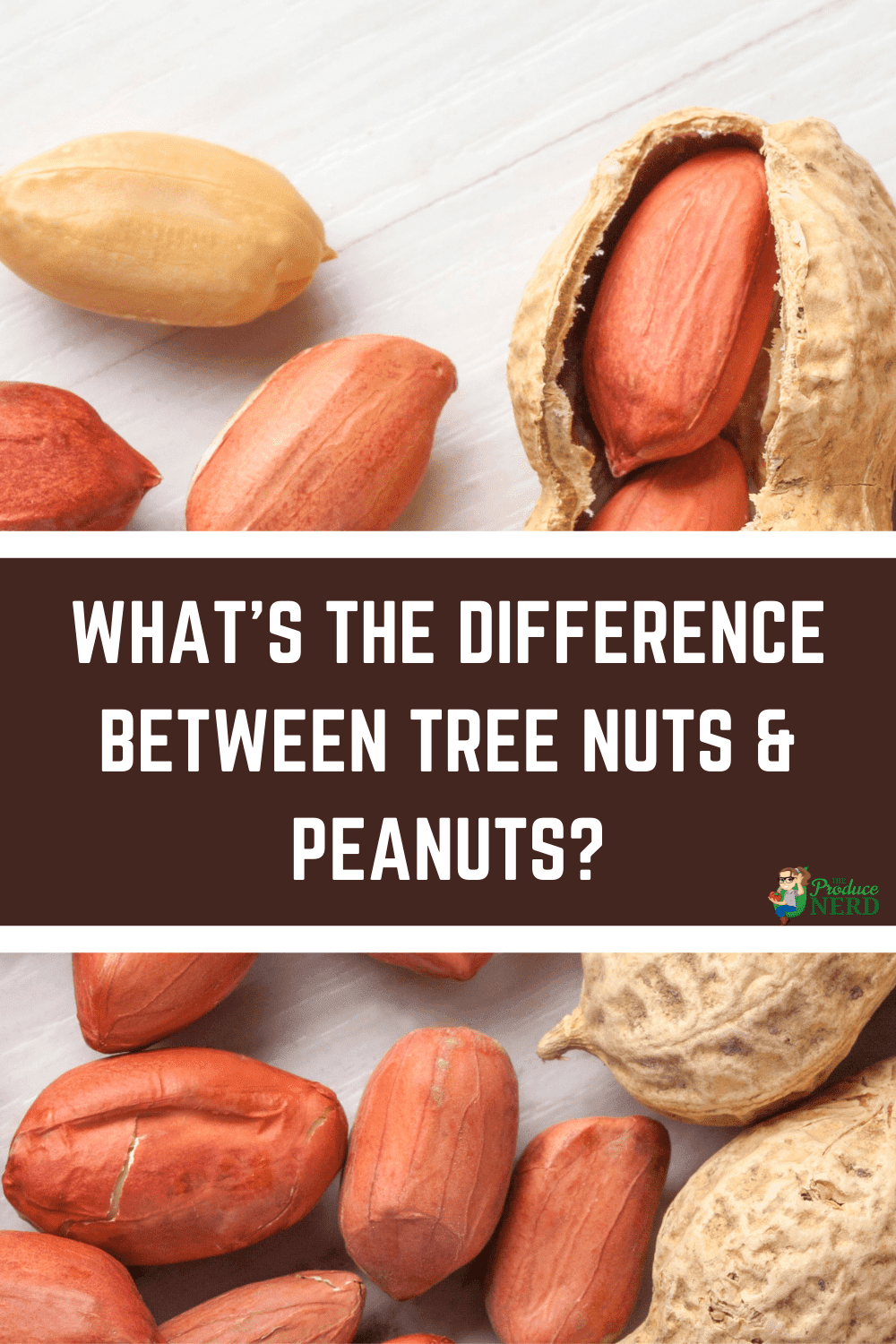I was recently asked about the difference between tree nuts and peanuts because some allergen labels consider them as two different groups. Which, in fact, they are. However, it can be confusing sometimes because other labels list out each individual nut in the product instead of just listing “tree nuts” or “peanuts.”
Table of Contents
Allergen Labeling
Every country has their own categorization of allergens, which is something that food producers need to consider when preparing and labeling food destined for domestic and export sales. Allergen labeling is such an important step that if it is missed or incomplete, a recall will be initiated for the product.
Although we are used to seeing allergen labeling on processed products, it is also a concern for fresh produce items. For example, if a packinghouse packs both non-allergen and allergen containing products, there either needs to be complete separation or clear cleaning and sanitizing practices in place between the different products being ran. Or, if a cooler is storing fresh fruit and any kind of nut, or allergen containing product, they have to have separate storage areas to protect the consumer. There can also be additional labeling warning the consumer about shared storage or production space.
United States Allergen Labeling
In the United States, the FDA has designated 8 main allergen categories:
- Peanuts
- Tree nuts
- Soybeans
- Milk
- Eggs
- Fish
- Crustacea
- Wheat
So, why are peanuts not included in the same category as tree nuts?
What’s the Difference Between Peanuts and Tree Nuts?
Although peanuts and other tree nuts (e.g., walnuts, Brazil nuts, almonds, cashews, etc.) are both classified as nuts in common terms, they are listed as separate categories in the allergen listing because they are grown on different kinds of plants. This is because peanuts are technically classified as legumes/seeds, just like sunflower or sesame seeds. It is a lot easier to understand when you know how the peanuts grow versus tree nuts. Tree nuts grow above-ground on trees, while peanuts grow underground.
In the video below from Sky Blue Videography, you can see how peanuts are grown in Georgia. When you see the growing and harvesting process, it appears more similar to processing tomatoes than it does to tree nuts.
Whereas, with tree nuts, they grow like any other tree fruit. Below, you can see an almond orchard (left) and a walnut orchard (right).
Regardless of the categorization, both need to be taken very seriously when it comes to allergens. While people may only be allergic to certain types of tree nuts, that can lead to a higher risk of being allergic to other types of tree nuts. Also, since peanuts can be processed in the same facilities as other tree nuts, it is important to make sure to read the labels of all products purchased because of a greater risk for cross-contamination.
Further Resources
Allergens are a long and complicated topic. If you know someone who has one of the common eight allergens, you know it can get really tedious. Luckily, there are resources available to help you when preparing and purchasing food, as well as when treatment is needed. One of the most detailed resources online can be found at the Food Allergy Research & Education website. This website, along with the FDA allergen rules and regulations website can be helpful for food producers.
If you enjoyed this post, you might also like:

